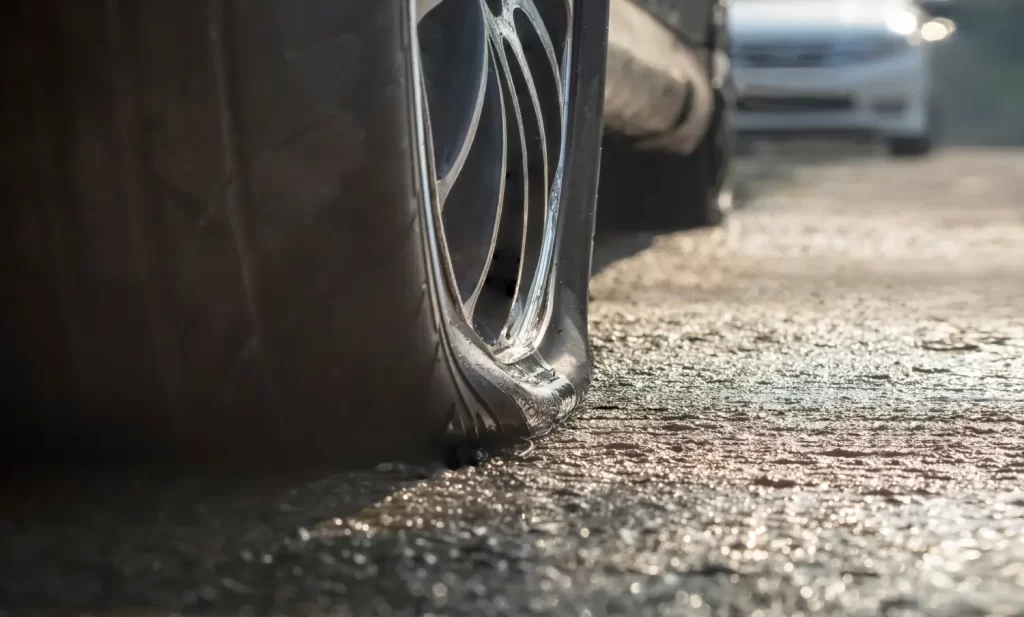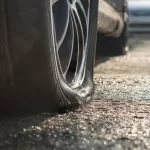Getting a flat tire can ruin your day, but before replacing it, consider whether a repair may be the better option. There are pros and cons to both tire repair and tire replacement. Understanding when it’s safe to repair versus when you need to replace your tire can save you money and get you back on the road faster. In this article we talk a bout Tire Repair vs. Replacement-When Can You Repair a Tire Safely?
What Causes Tire Damage?
There are a few common causes of tire damage that may require a repair or full replacement:
- Punctures from nails, screws, glass, etc. Small puncture holes under 1⁄4 inch can often be safely repaired if the damage is only to the tread area not the sidewall.
- Tire sidewall damage from hitting curbs can lead to bulges, cracks, or cuts. This type of damage usually requires tire replacement.
- Tread area damage like snags, abrasions, or slicing from things in the road. Minor tread damage may be repairable based on size and depth.
- Tire inner liner damage caused by a puncture that allows air leakage out of the interior of the tire requires replacement.
- Bead damage caused by improper mounting or other installation issues can potentially be repaired but may need replacement.
When Can You Repair a Tire?
Tire repair is an affordable option to replace one tire and get you back on the road quickly. Here are some instances when tire repair may be appropriate if performed by a qualified tire service professional:
- The tire damage is limited to the tread area, not the sidewall. Tread punctures under 1⁄4 inch can often be repaired.
- It’s a relatively new tire with substantial tread depth remaining. Repairs last longer on tires with more tread.
- The damage is a single puncture hole, no slashes/cuts, and hasn’t caused other internal tire damage.
- No secondary damage exists like bulges, cracks, or indication of internal belt/liner damage.
- There is no evidence of previous repairs. The more repairs, the higher risk of failure.
- The tire has not been driven underinflated for any substantial distance, which can cause further internal damage.
When Should You Replace a Tire Instead of Repairing?
While repairs can offer short-term cost savings, there are also safety risks if underlying damage exists. Replacement is the best option when:
- The tire has damage to the sidewall like cuts, bulges, cracks, or punctures.
- You discover evidence of previous repairs when removing the tire.
- The tire has two or more punctures in close proximity that requires multiple patches.
- The damage caused a tire pressure loss that led to visible inner liner damage.
- The puncture size exceeds 1⁄4 inch in diameter. Some brands limit to 3/16 inch.
- The damage is due to a road hazard and caused visible secondary damage.
- The tire tread depth remaining is insufficient. Many recommend a 2/32 inch minimum depth to repair.
- You have any doubts about the tire’s integrity or future reliability after a repair.
Safety should come first when evaluating cost savings versus risk. Extensive damage or repairs needed on an older tire with minimal tread may not be worth the risk compared to purchasing a quality replacement.
Benefits of Tire Repair
When performed correctly on tires with only minor, repairable damage, tire repair offers many benefits:
- Significant cost savings over the price of one new replacement tire
- Convenience of getting your car back on the road the same day
- Keep the existing tires with substantial tread depth remaining
- Avoid prematurely replacing other tires to match new ones
- Maintain the same tire brand, model, size, and speed rating
Potential Risks of Tire Repairs
While repairs can save money, they may carry risks in some situations. It’s essential repairs are done properly on qualified damages.
Potential repair risks include:
- Improper plug/patch installation that leaks air or comes loose
- Hidden secondary damage not visible that causes failures
- Shorter repair service life compared to new, pristine tires
- Negative impacts on ride quality or balancing
- Later failure and difficultly detecting nails/screws if they back out
Only qualified tire service professionals should conduct repairs to ensure they are performed correctly. Repairs should also have a warranty against defects or workmanship issues.
The Bottom Line
Evaluating if you can repair a tire instead of replacing it starts with properly inspecting the type and extent of damage and understanding your repair options. Minor tread punctures or snags on tires with adequate remaining tread can safely be repaired in many cases. This allows you to save money and continue using the tire. But more serious damage often requires replacement to avoid safety hazards related to sudden failures. I sincerely hope you find this “Tire Repair vs. Replacement-When Can You Repair a Tire Safely?” article helpful.

Ranjit is the lead writer for tirescompanies.com, bringing over 10 years of expertise in the tire industry. With a degree in Automotive Engineering and a deep understanding of tire technology, Ranjit specializes in providing detailed and insightful tire reviews. His extensive knowledge ensures that each review is both informative and practical for consumers. For the latest updates and expert advice on tires, follow Ranjit on Instagram.







